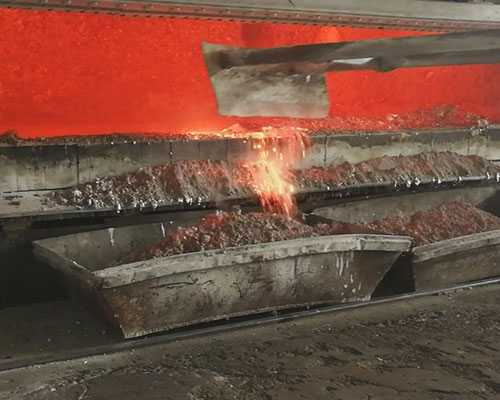
30 7月 Aluminium Refinery
Aluminium Refinery is to formulate a reasonable smelting process to obtain an aluminum alloy melt with a chemical composition that meets the production requirements and high purity.
The smelting of recycled aluminum alloys is to remelt the pre-processed aluminum scrap, aluminum scraps, etc. in the smelting furnace, and perform degassing, degassing, modification, and refining in the melting process 1 to obtain chemical composition compliance The required molten aluminum is finally poured into an ingot.
The raw materials of recycled aluminum are generally waste materials with mixed and unclear components of different alloys. They must be smelted and used to eliminate harmful impurities, gases and oxides in the waste materials in order to provide high-quality melts for the production of ingots. .
The following will focus on the relevant aspects of domestic and foreign secondary aluminum smelting technology.
Compared with primary aluminum, recycled aluminum contains more impurity elements, mainly Fe, Mg, Zn, si, Cau, Mn. Due to the presence of impurity elements, the performance of recycled aluminum will be reduced, and most aluminum alloys are degraded and used. . Therefore, studying the removal of impurity elements in the production process of secondary aluminum has very important practical value.
Magnesium can increase the strength of aluminum alloys, but too much magnesium can cause stress corrosion and welding cracks in lead alloys. Compared with other impurity elements, the removal of Mg impurities is easier.
Magnesium removal granular refining agent can remove magnesium ions in the recycled aluminum molten metal.
When Zn exists in the aluminum alloy in the form of impurities, it will reduce the welding performance of the aluminum alloy.
Zinc removal refining agent can remove the zinc ions in the recycled aluminum molten metal.

At present, there are mainly two methods to reduce or reduce the harmful effects of iron on aluminum alloys
It is to reduce the iron content in the aluminum melt through certain measures; the second is to change the structure of the iron phase in the aluminum alloy by taking the melt overheating, increasing the cooling rate, adding modifiers or neutralizers equal to the stage.
It is mainly to add the additives containing the four elements of Cr, Mn, Zr, and Ni to the iron-rich melt, and process them to form a multi-element iron-rich phase. These multi-element iron-rich compounds will grow up as the temperature decreases. And settle down.
Then use a ceramic foam filter to filter the settled melt to remove the small iron-rich particles settled by the wood.
Aluminium Refinery function
The refining agent is mainly used to remove the hydrogen and floating oxidized slag in the aluminum liquid, so that the aluminum liquid is more pure, and it also has the function of a slag cleaning agent.
Part of the components in the refining agent are easily decomposed at high temperatures, and the generated gas is prone to hydrogen reaction, has a strong adsorption force with slag inclusions, and quickly escapes from the melt. Other components also have the function of slag cleaning agent.
Scope of use
It is suitable for common grades of aluminum alloy (alloys with high magnesium content and aluminum-magnesium alloys cannot be used), and when smelting pure aluminum, degas refining and slag removal.
Instructions
Sprinkle the refining agent on the surface of the liquid, quickly press it into the molten aluminum, stir it and let it stand still to remove the slag; for example, with the help of a jet, spraying the refining agent into the molten aluminum with inert gas has a better effect.


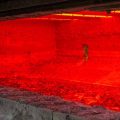
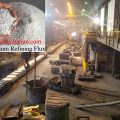

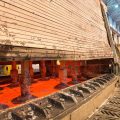
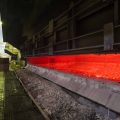



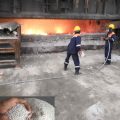
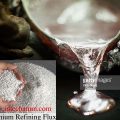
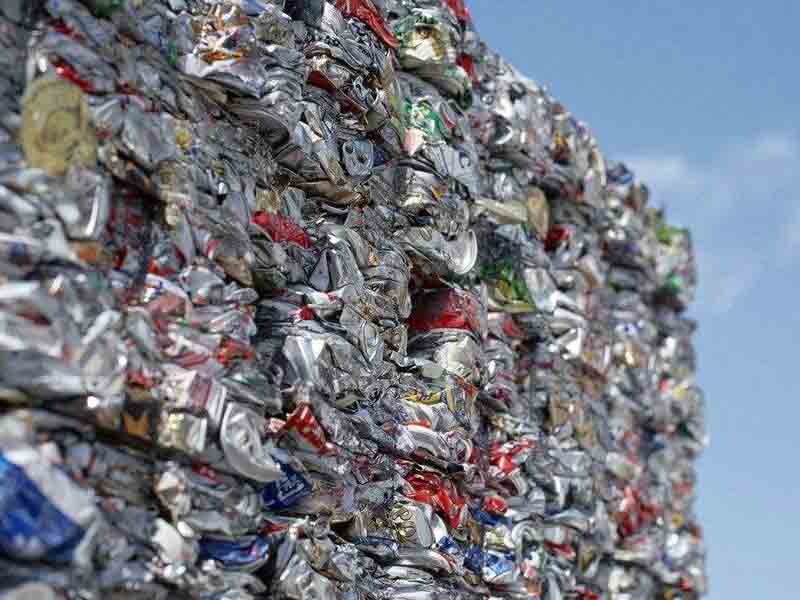

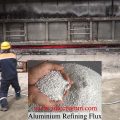
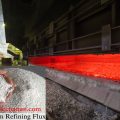
No Comments